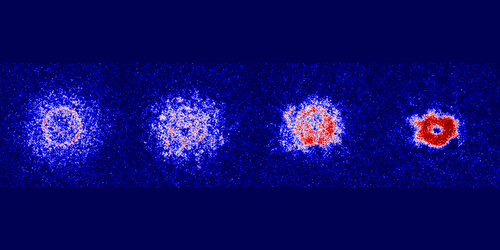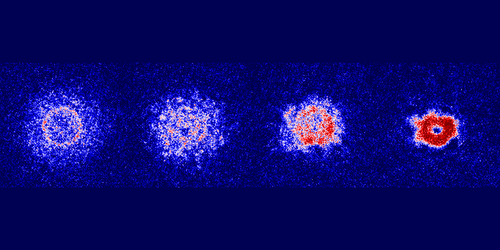Ultracold Fermions Go Round and Round
At low enough temperatures, an atomic gas can become a superfluid that hosts a persistent current of atoms that flows without any external driving force. Such a current has been observed in a bosonic-atom superfluid but not, until now, in a fermionic-atom one. Now, Yanping Cai and colleagues at Dartmouth College, New Hampshire, have demonstrated an experimental procedure to generate a persistent current in a fermionic-atom superfluid [1].
For their experiments, the team used a mixture of lithium-6 atoms that contained atoms of two different spin states. The team trapped these atoms in a ring geometry and then cooled them to a few tens of nanokelvin. The team then adjusted the interaction strength among the atoms by applying a magnetic field of varying strength. This magnetic field impacted the robustness of the resulting superfluid.
To study the system’s current, the team stirred the superfluid atoms with a laser beam. They then increased the strength of the applied magnetic field, which weakened the atoms’ interactions. They found that the stirring set up a current, and that this current persisted in the system for up to 10 s, even as the atom interactions weakened.
The team says that, for now, the setup required to make a persistent current in a fermionic-atom superfluid will make it hard to use that current in practical applications, such as quantum sensors. However, being able to control the interaction strength among fermionic atoms is of fundamental research interest. It could enable tabletop experimental simulations of the Kibble-Zurek mechanism, which is theorized to be relevant to the early Universe dynamics.
–Martin Rodriguez-Vega
Martin Rodriguez-Vega is an Associate Editor for Physical Review Letters.
References
- Y. Cai et al., “Persistent currents in rings of ultracold fermionic atoms,” Phys. Rev. Lett. 128, 150401 (2022).





